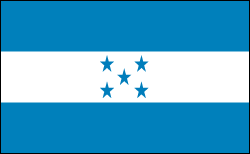Background:
Once part of Spain’s vast empire in the New World, Honduras became an independent nation in 1821. After two and a half decades of mostly military rule, a freely elected civilian government came to power in 1982. During the 1980s, Honduras proved a haven for anti-Sandinista contras fighting the Marxist Nicaraguan Government and an ally to Salvadoran Government forces fighting leftist guerrillas. The country was devastated by Hurricane Mitch in 1998, which killed about 5,600 people and caused approximately $2 billion in damage. Since then, the economy has slowly rebounded.
Historic Overview:
- Columbus first set foot on the American mainland in Trujillo in 1502
- The region was named Honduras (meaning great depth) for the deep water off the coast.
- The Spaniards soon moved into the cooler highlands and were constantly battling with native tribes, including Chief Lemira’s army of 30,000, who almost drove the Spanish out of the region until he was murdered while attending peace talks in 1537.
- Comayagua (co-my-a-gwa) was declared the Spanish colonial capital a year later.
- When gold and silver was discovered around Tegucigalpa in 1570, British and Dutch ships began attacking treasure galleons headed out of Trujillo.
- Pirates settled the Caribbean coast and looted and burned Trujillo in 1643.
- The British established a protectorate along the Caribbean coasts, ostensibly to keep the area free of pirates and protect the native Miskito tribes; but British fortunes were made from the mahogany forests of the region.
- Honduras broke free from Spain in 1821 and first became part of an independent Mexico.
- The Honduran Republic was established in 1838, and the British relinquished the Caribbean coastal region in 1859.


